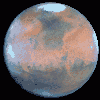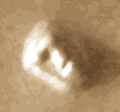|
|
|



This is my news page where I will keep you up to date in what is happening in the astronomy world. Maybe a new comet has entered the sky, or a planet is making a close approach to Earth. Whatever it is, this is where to find out about it.
12th Decmeber 2001
Comet alert! There is a new comet in the sky visible in the southern hemisphere. Right now it's about magnitude 5, so it's easily visible to binoculars. Find out more here.
4th July
This is the exact email I got from Keith Williams of the Astronomy Group of Western Australia:
LOS ANGELES (AP) Astronomers announced Monday they have discovered an icy body that rivals Pluto's moon in size and hints that other planets may lurk within the far reaches of our solar system. The object, 2001 KX76, appears to be between 595 and 788 miles across, making it larger than any known asteroid and, perhaps, even Pluto's moon Charon. Charon is estimated to be 744 miles in diameter. A team of astronomers used the Cerro Tololo Inter-American Observatory in Chile to find the object in images taken on May 22. It orbits the sun at a distance of about 4 billion miles in the Kuiper Belt of objects beyond Neptune. The new object apparently trumps in size all other known objects beyond the orbit of Neptune, except Pluto itself. Astronomers spotted the first Kuiper Belt object in 1992. Billions more are thought to exist, including some 70,000 at least 60 miles across. They are by far the most abundant type of large objects in the solar system. "The excitement of this is that it's a new frontier: There is this region in the solar system beyond Neptune that is populated with a large number of objects and we have no idea of what we may ultimately discover out there," said Robert Millis, director of the Lowell Observatory in Flagstaff, Ariz. Astronomers from the observatory, the Massachusetts Institute of Technology and the Large Binocular Telescope Observatory found 2001 KX76 as part of a survey of Kuiper Belt objects sponsored by NASA.
Kuiper Belt objects are important because scientists believe they represent, preserved by the deep freeze of space, pristine remnants of the disk from which the solar system was created. The belt is also believed to be the source of the comets that pass close to the sun. Scientists say further probing of the Kuiper Belt could turn up more large objects, including bodies that may rival Pluto in size. The ninth planet is about 1,400 miles across. "The expectation has been for the last few years that we would find some objects of Pluto's size and perhaps larger than Pluto. The question now is when these objects will be picked up," said David Jewitt, a University of Hawaii professor who, with Jane Luu, discovered the first Kuiper Belt object less than a decade ago. Further observations of 2001 KX76 should provide better estimates of its size. On the Net: http://www.lowell.edu/ Reply Reply All Forward Delete